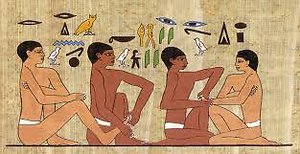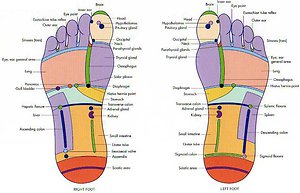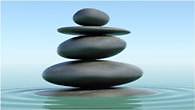What is Reflexology?
Reflexology is a non-invasive technique of applying pressure and massage to reflex points and areas of the feet, hands or face. Reflexology is based on the principle that each reflex point is connected to organs and structures of the body by energy channels and zones. When illnesses or physical health difficulties occur, these energy channels can become blocked. Reflexology aims to unblock these channels, allowing energy to flow freely. Reflexology increases circulation which also stimulates the body’s own healing processes. The body needs equilibrium in order to function healthily and even a light treatment can help to restore this sense of balance. Through initiating a deep sense of relaxation, the body and mind are enabled to restore their natural balance. Overall well-being is therefore achieved.
Reflexology is not an intervention that diagnoses or cures illnesses, instead it encourages and facilitates the body to heal itself.
Reflexology is not an intervention that diagnoses or cures illnesses, instead it encourages and facilitates the body to heal itself.
How can Reflexology help you?
It is estimated that 75% of illnesses are stress related. By initiating a sense of calmness and relaxation, reflexology helps reduce negative effects of stress, enabling the body to focus on self healing. Reflexology can assist with a range of physical and emotional health difficulties for those of any age. It aims to assist the body by aiding relaxation and reducing stress; improving blood circulation; helping improve the immune system; detoxifying and balancing the mind and body systems; unblocking, stimulating and revitalizing energy flow and preventing disease and ill-health. Reflexology can successfully improve the following conditions, as well as others:
-stress
-anxiety, depression and other mental health difficulties
-pregnancy related conditions
-headaches and migraines
-sleep disorders
-asthma and respiratory disorders
-back pain
-chronic pain
-digestive issues
-hormonal imbalances
-postoperative symptoms
-lowered immunity
-stress
-anxiety, depression and other mental health difficulties
-pregnancy related conditions
-headaches and migraines
-sleep disorders
-asthma and respiratory disorders
-back pain
-chronic pain
-digestive issues
-hormonal imbalances
-postoperative symptoms
-lowered immunity
Origins of Reflexology
The beginnings of Reflexology are in the ancient Chinese and Japanese acupressure and massage arts. It was introduced to the West in the early 20th Century by Dr William Fitzgerald. He researched and developed the practice and introduced ‘Zone theory’, which divides the body into 10 zones in which areas on the feet, hands and head are linked to areas and organs of the body within those zones. Dr Fitzgerald found that by putting pressure on one part of the body, an anaesthetising effect could be created in a different part of the body. In the 1930’s, Eunice Ingham further developed this into what we know as Reflexology today. She is known as the ‘Mother of Reflexology’, developed the foot maps used today and the ‘Ingham method’ of delivering Reflexology that is taught and practised worldwide today.


